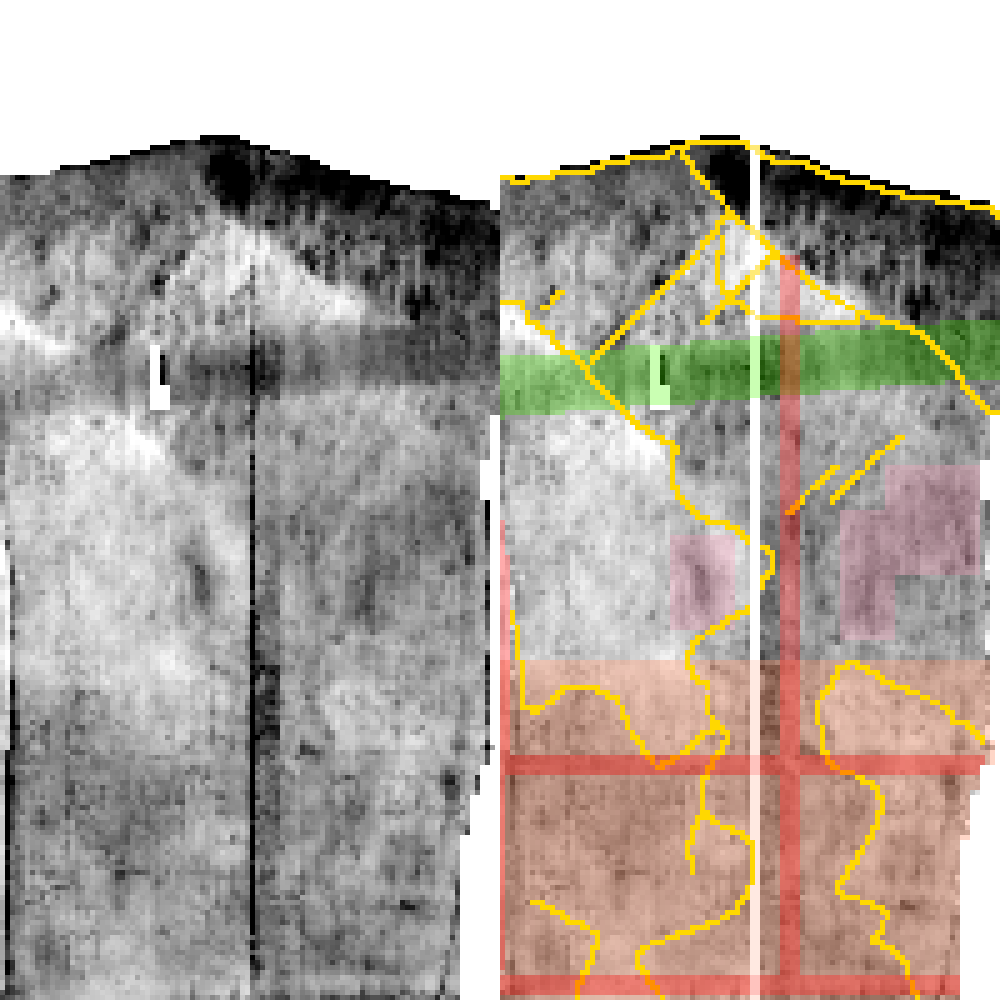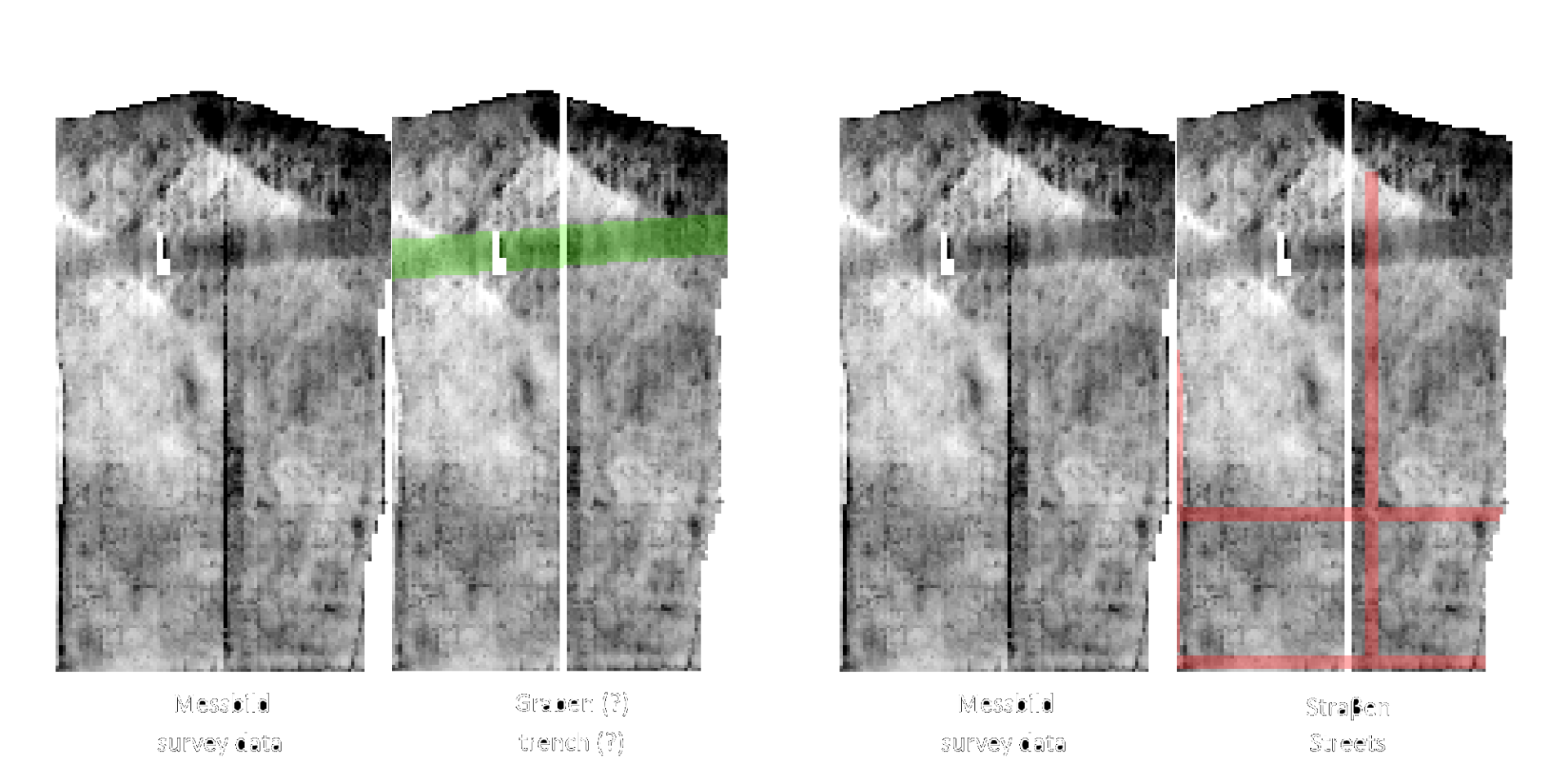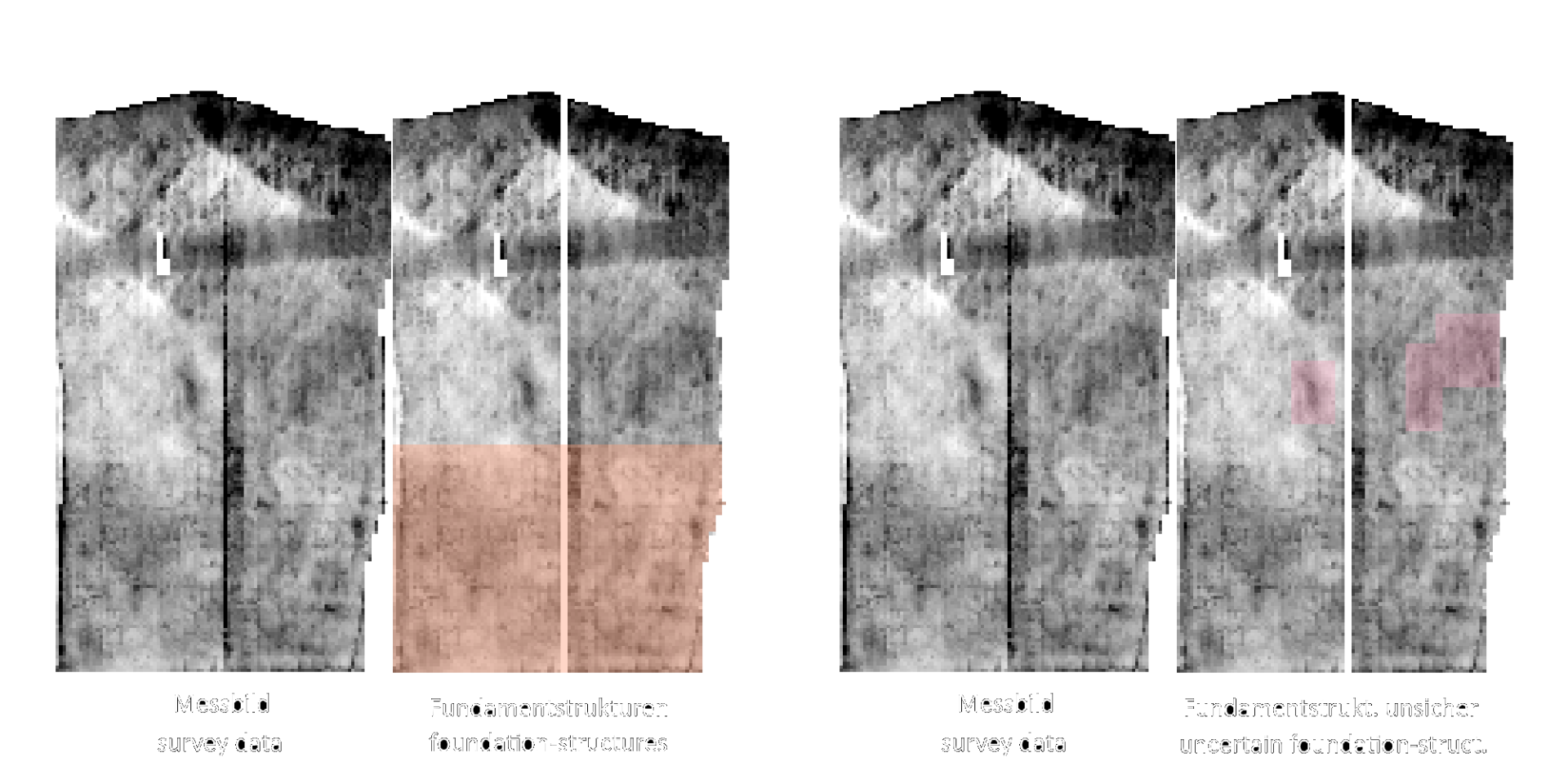Spanien => Deutsch => images


Monument type
Peripheral area of a Roman town, search-survey
Survey data
Area investigated: 100 m x 200m, 20.000m2
Resolution: 1 MP/m2 (a = 0,56 m)
Array configuration: Twin-probe
Measuring instruments: Lippmann 4point light 10W
Imaging software: SURFER (Golden Software)
Survey period: 04.04.2022 - 06.04.2022
Comments
The measurement area comprises two plots of arable land and the edges of the plots show a narrow, high-resistance compaction line caused by modern terrain steps between the individual plots and by the accumulations of stones picked up from the field and deposited at the edge of the plot. These compaction lines were removed in the redrawing to make the structures easier to recognise.
In the north-western third of the survey area, a dense, uniform insula structure is recognisable. There are no prominent, more massive structures of individual buildings.
Two parallel streets running from north-east to south-west and two further streets running at right angles to them form four recognisable insulae. A building boundary of the two south-eastern insulae cannot be recognised with certainty, as further possible foundation structures of individual buildings are indicated in this area.
The presumed ditch structure, which is approx. 12 m wide and runs across the entire survey area, is highly resistive and thus raises questions about its backfilling, which should generally consist of the material on the sides, but should then be perceived as low resistance. However, a strong compaction or backfilling with stone material is unlikely to explain the measured values.
Various geological faults run through the entire measurement area. They are unusually right-angled and linear in the south-eastern third of the two plots


